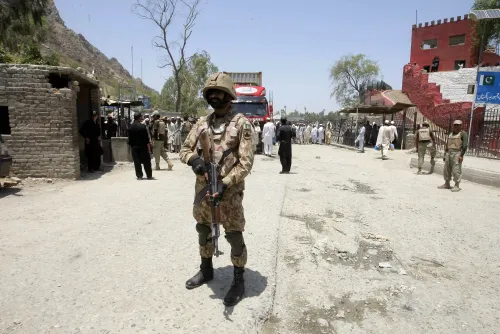Are Millions of Australians Ready for Severe Heat and Damaging Winds?

Synopsis
Key Takeaways
- Severe weather warnings issued for multiple states.
- Temperatures may exceed 39 degrees Celsius in Sydney.
- Extreme fire danger alerts in Greater Sydney.
- Health officials urge people to stay hydrated and indoors.
- Climate change is intensifying heat events.
Melbourne, Oct 22 (NationPress) Millions of Australians have received urgent warnings to brace for extreme weather on Wednesday as heatwaves and damaging winds impact the nation.
The Bureau of Meteorology (BoM) issued alerts early Wednesday for strong winds affecting the eastern coast states of New South Wales (NSW) and Victoria, in addition to South Australia (SA). Meanwhile, Queensland and the Northern Territory (NT) are under heatwave warnings.
Forecasts predict that maximum temperatures could soar beyond 35 degrees Celsius along the densely populated eastern coastline of NSW, with Sydney potentially reaching 39 degrees Celsius, exceeding the city's record of 38.2 degrees Celsius set in 2004.
The combination of intense heat and winds gusting up to 100 kilometers per hour has led the BoM to issue an extreme fire danger warning for Greater Sydney and surrounding areas.
NSW's Health Minister Ryan Park advised residents to stay indoors and check on vulnerable members of the community, including the elderly, young children, and pregnant women.
"We urge everyone to take precautions against the heat today by staying cool and hydrated," he stated.
This warning follows reports that both Queensland and NSW recorded their hottest October day ever just a day prior, with temperatures hitting 46.1 degrees Celsius in Queensland and 44.8 degrees Celsius in NSW, as reported by Xinhua.
Though Victoria and SA are not currently affected by the heat wave, the BoM warns that they may experience strong wind gusts as a low-pressure system moves eastward from Australia's southern coast.
Heatwaves in Australia arise from various factors such as vast landmasses, desert climates, and high UV radiation levels. Recent heat events are intensified by warm air moving from central Australia, high ocean temperatures, and specific atmospheric conditions like tropical cyclones or rare stratospheric warming events over Antarctica.
Additionally, the climate crisis is amplifying the occurrence and severity of these extreme weather events, as Australia’s land surface continues to warm significantly.









